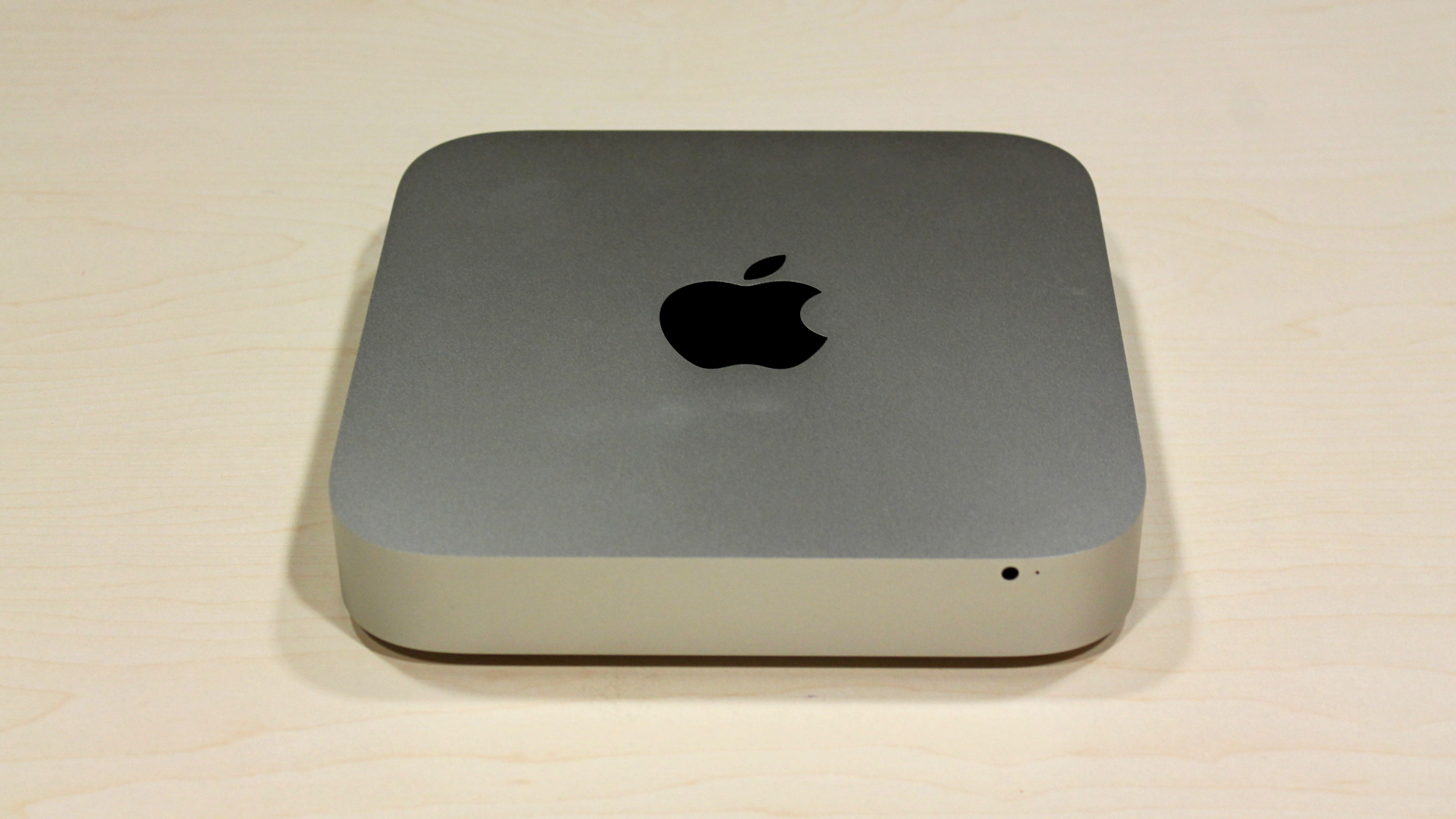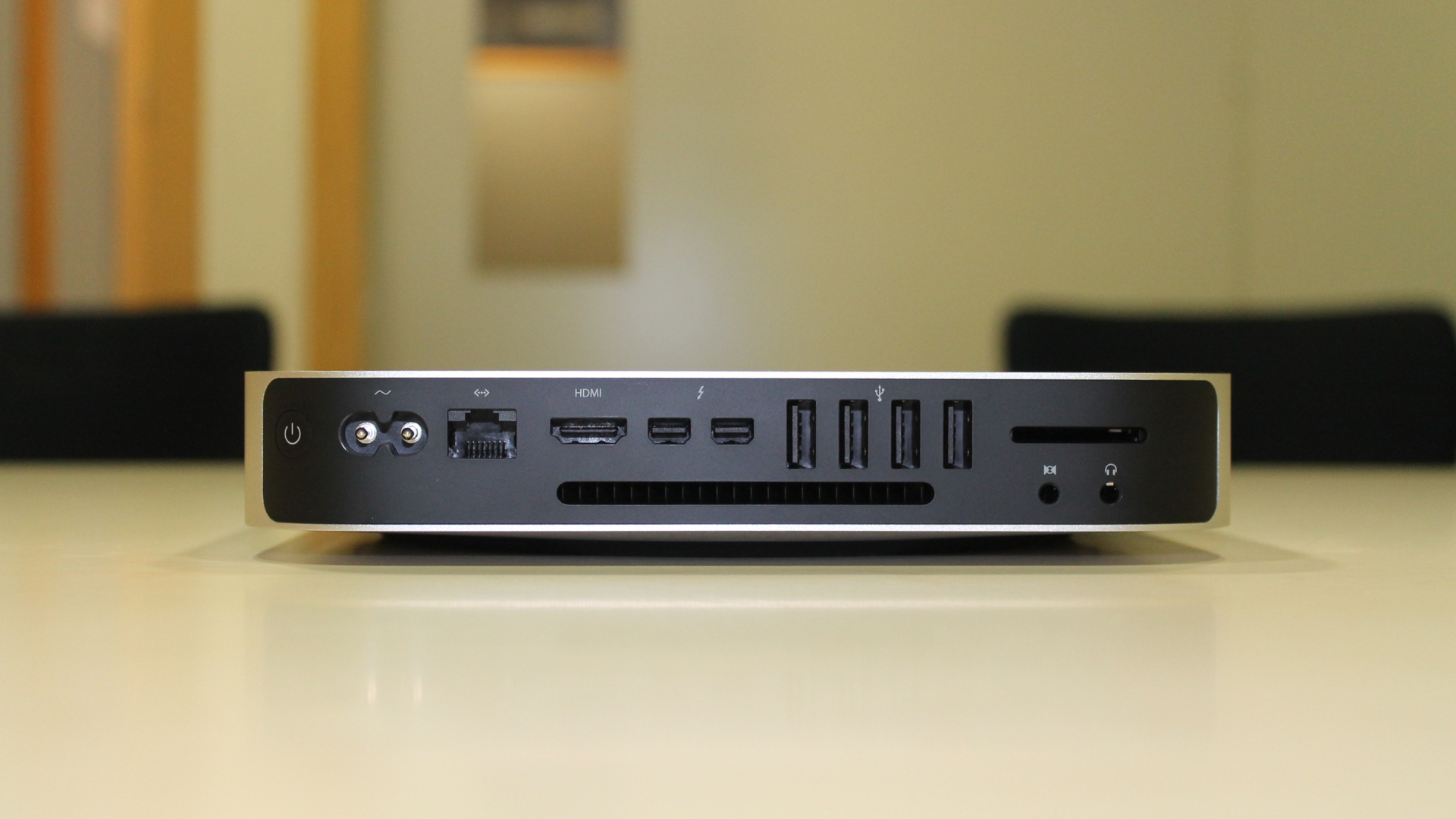Why you can trust TechRadar
The Mac mini has always been popular as an office machine for not just its compact size, but also its low power usage. According to Apple, the new Mac mini consumes just 6 watts of power when in idle mode, making it one of the most economic, energy-sipping computers around - something reflected in the machine's near-silent operation.
Benchmarks
- Xbench 1.3: 326.07
- Cinebench 15 (multi-core) 291cb
- Cinebench 15 (OpenGL): 26.17cb
- Novabench (Overall): 106
- Novabench (Graphics): 46
- 3DMark: Sky Diver: 1,312; Fire Strike: 350; Ice Storm: 24,849
The high-end Mac mini is no slouch thanks to a fast Intel Core-i5 processor, 8GB of RAM and a nippy Fusion Drive. Boot times are short - around 15 seconds - and opening and closing apps is mostly instantaneous. When it comes to handling graphics, the new Mac mini is a mixed bag. Its Intel Iris solution inside is comparable with the MacBook Pro with Retina, which scored 44 on NovaBench's benchmark compared with the Mac mini's 46.
Graphically demanding game Dead Island ran with choppy frame rates of around 20FPS on a low 1,024 x 768 pixel-resolution setting with graphical details tuned down. Valve's Team Fortress 2, which is based on a less-intensive engine, fared better to maintain a consistent 50-60 FPS while set to 1,920 x 1080. The Mac mini will handle Steam games and equivalent titles without breaking a sweat, but you would be hard pressed to make it run anything more demanding at fluid frame rates.

4K limitation
Performance-wise, one big drawback to the Mac mini is that it's unable to drive a 4K monitor at 60Hz. Because of a limitation of the Intel CPU inside, its refresh rate is limited to 30Hz, which makes for an unpleasantly laggy experience. Whether you're using Thunderbolt 2 or HDMI, you'll still encounter choppy performance that makes performing productive tasks awkward and time consuming. If you're thinking of going 4K, the Mac mini isn't the best way to go about it.
Sign up for breaking news, reviews, opinion, top tech deals, and more.

